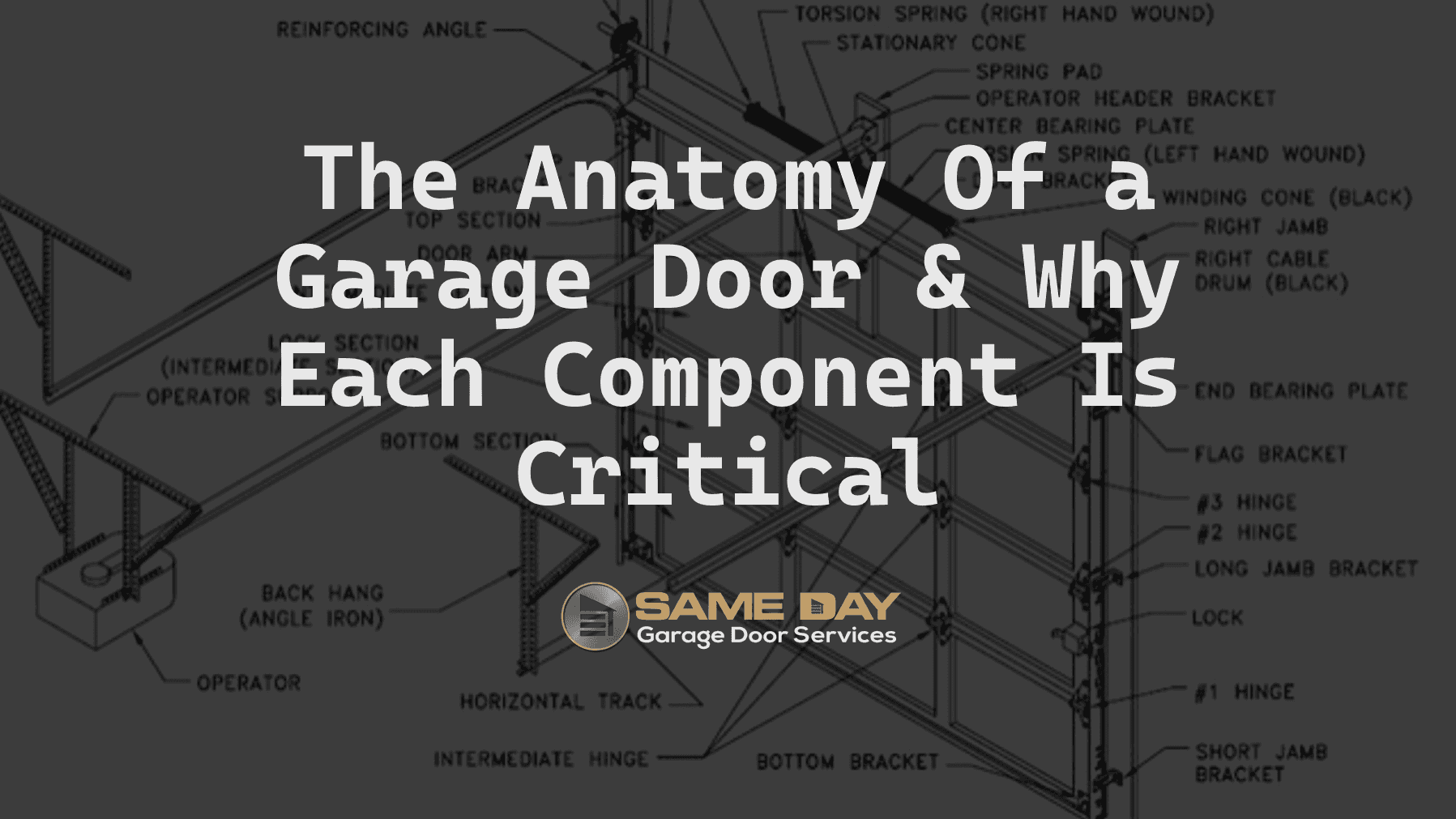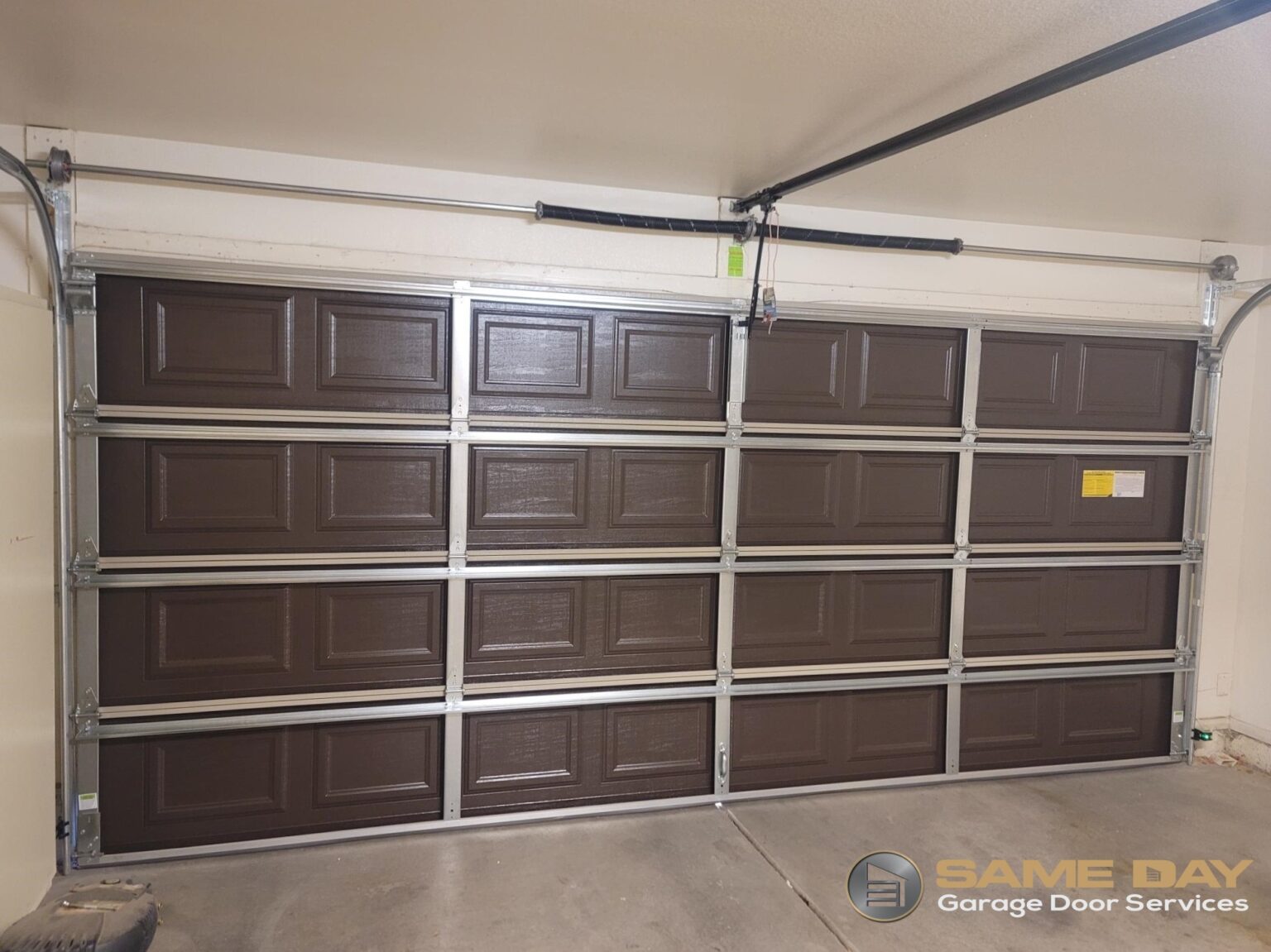Blog
Maintenance
The Anatomy Of a Garage Door & Why Each Component Is Critical
A survey of American homeowners showed that an astounding 89 percent of homeowners regularly rely on their garages as a primary entrance to their home. Additionally, 71 percent of survey takers stated that they used their garage door openers daily. This means that automatic garage door openers are among the most widely and frequently used home appliances. Unfortunately, many homeowners don’t understand the basics of how their garage doors work.

Homeowners may find that a lack of knowledge about how their garage doors work can make it difficult for them to recognize any potential problems when they happen. Having this knowledge can help keep garage door repair costs at a minimum since you will be able to diagnose basic malfunctions and seek local garage door repair before problems get worse.
This will keep your garage door repair costs down.
You’ll also prevent inconvenience and risk of damage or injury when your garage door is in need of repair. Keep reading to learn more about the major components of garage door systems so you can keep your garage door operating smoothly!
Garage Door Parts & Components: What You Need To Know
Component #1: Garage Door Springs
Most people believe that the power used to open and close their garage doors solely comes from the overhead motor. You may be surprised to learn that the overhead motor actually provides only a small amount of power, just enough to initiate movement of the garage door system. In reality, the majority of the lifting power comes from the garage door springs.
There are two different types of garage door springs, called extension and torsion springs. All residential garage doors, regardless of their size, use one of these two types.
Usually, older garage door systems were made with extension springs. These create the force needed to open a door by expanding and contracting. In contrast, torsion springs work with a twisting motion and are used in modern garage doors.
As a homeowner, you can quickly and easily verify which kind of spring system is install on your door by taking a look at the inside of your garage door. If the garage door springs are mounted horizontally on both sides of the door, you have extension springs. Torsion springs will wrap around a bar above the top of the garage door frame.
A Chandler garage door repair service can repair either type of spring. Over time, both extension and torsion springs will wear out and weaken from friction as they are used. Eventually, spring will break. This will cause your garage doors to not be able function. Your garage door may either open just a few inches or not at all. If you try to open the door manually, your door may seem extremely heavy and difficult to move without the assistance of the functioning springs. Contact a garage door repair service if your garage door gets stuck.
Component #2: Garage Door Lift Cables
Springs provide upward lifting force on your Gilbert garage doors through the cables, which are made of galvanized wires twisted together into thick strands. There is a cable on each side of the garage door frame. One end of the cable is attached to the bottom of the garage door.
When the garage door springs engage, they contract together, pulling the cable and wrapping the other end around a cable drum. Cables are a critical part of a garage door system because they are the parts that actually lift the garage door up and down. They are also important to older garage door systems built with extension springs, because they have the secondary purpose of securing the springs if they break.
Without the cables, a broken extension spring could go flying through the air and cause serious injury or damage to anything in the area.
Cables move by winding or unwinding every time you open or close your garage door. With long term use, the metal wires in the cables begin to break, causing progressive fraying throughout the cable, which will eventually cause it to break or fail. When that happens, your garage door will be very difficult or impossible to open. Cables are also susceptible to corrosion from exposure to moisture, especially at the bottom of the door near the ground.
If you suspect a damaged cable, contact Same Day Garage Door Services for repair.
Component #3: Tracks & Rollers For Garage Door Systems
Tracks and rollers are two different mechanical components that work together to safely and smoothly guide your garage door up or down. The metal tracks are located on each side of the garage door, while the rollers are attached to the door and rest inside the tracks like wheels on the road. Tracks have curved edges to hold the rollers securely in place. In a properly installed and well-maintained garage door system, the tracks and rollers guide the door smoothly up and down. With years of use, the tracks and rollers may wear from friction. Eventually, roller bearings can seize up or stop functioning when their plastic heads break. Tracks can become dented or bent. Scottsdale garage door repair services can replace these components when needed, so your garage door keeps running.
Hire a Professional Garage Door Repair Company In The Greater Phoenix Valley, AZ
If your garage door is stuck or not working properly, call Same Day Garage Door Services. Our friendly technicians can repair and replace any brand of garage door with same day service. Our work is backed by a 100% satisfaction guarantee and five star reviews from our happy customers. For the best customer service and great pricing for your garage door repair, call Same Day Garage Door Services today at (480) 750-7975

Same Day Garage Door Services, LLC
Email: samedaygaragedoorservices@gmail.com
Gilbert Location
1176 East Warner Road #117
Gilbert, AZ 85296
Phone: 480-573-2359
Tempe Location
6100 S Maple Ave #107
Tempe, AZ 85283
Phone: 480-750-7975
Maintenance
Trevor Leisek
Marketing Manager





